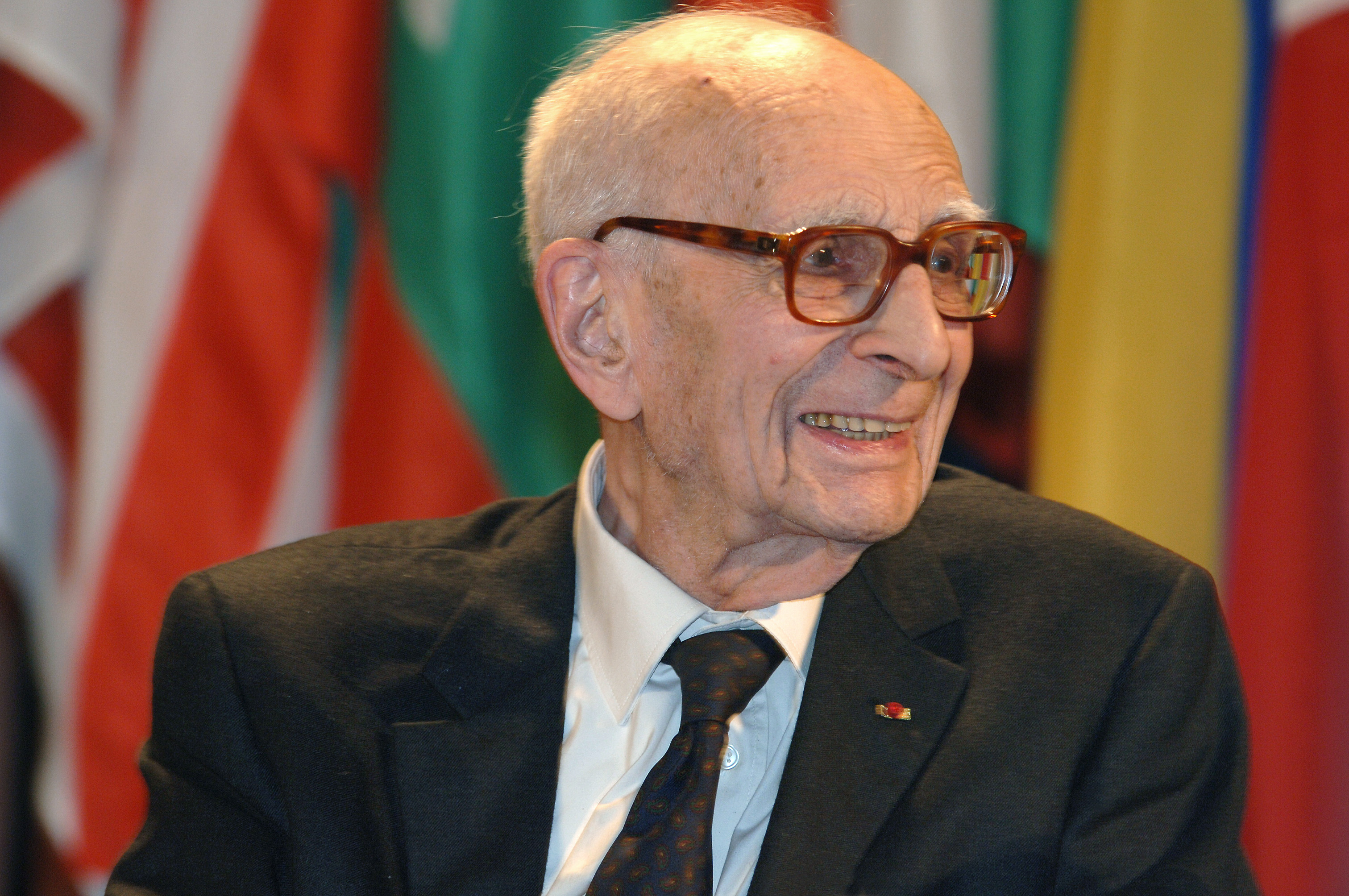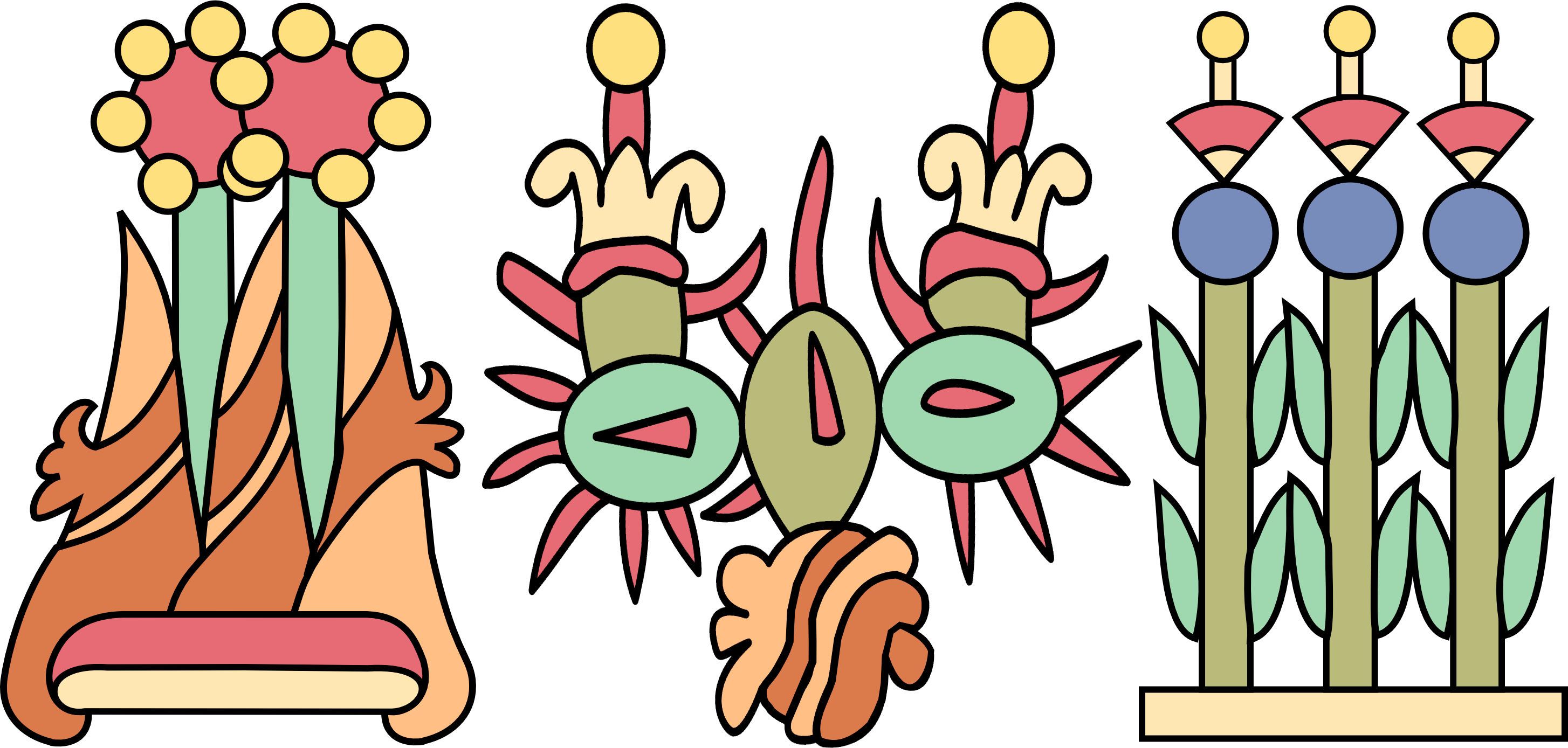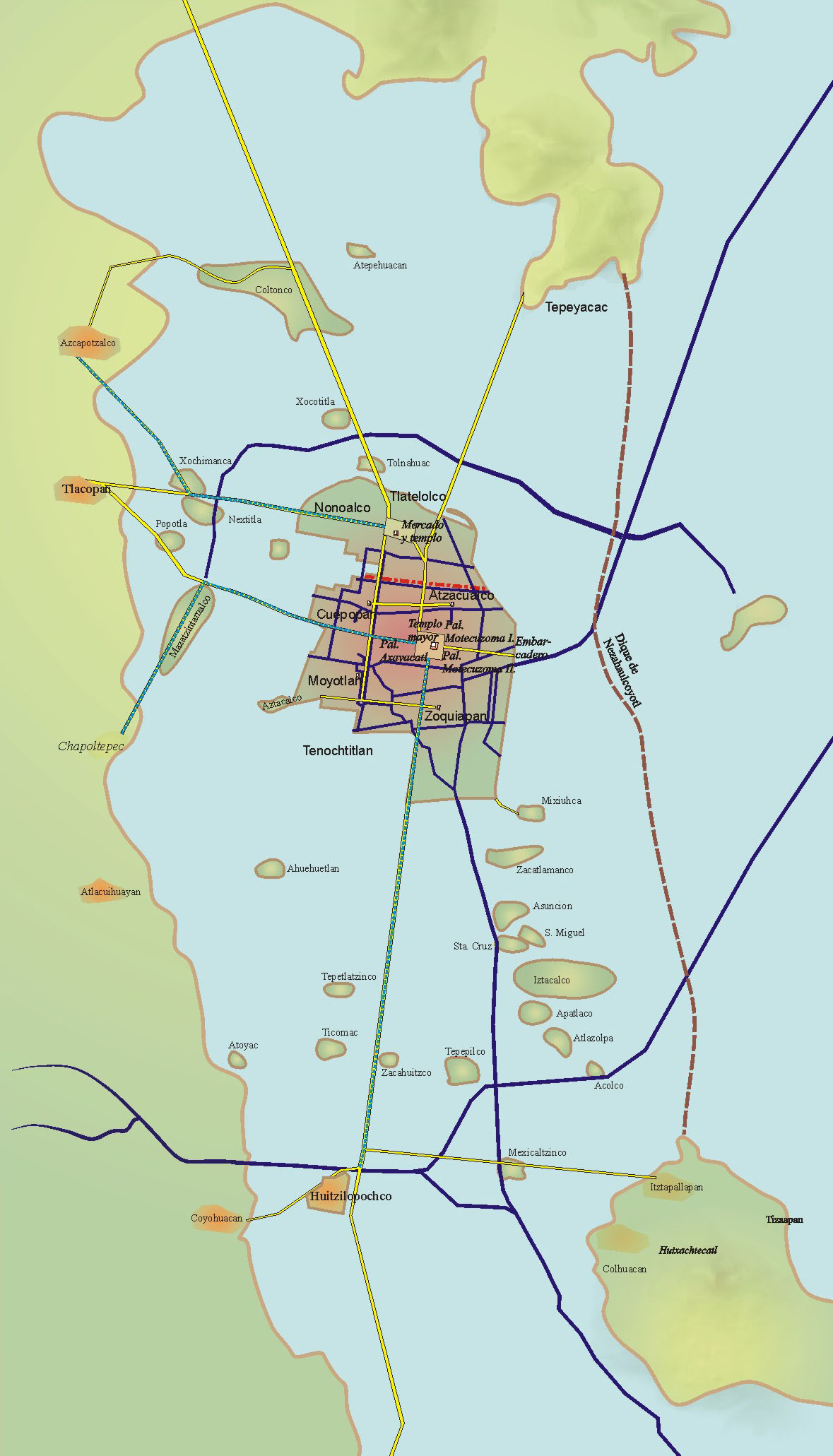|
Bernardino De Sahagún
Bernardino de Sahagún ( – 5 February 1590) was a Franciscan friar, missionary priest and pioneering ethnographer who participated in the Catholic evangelization of colonial New Spain (now Mexico). Born in Sahagún, Spain, in 1499, he journeyed to New Spain in 1529. He learned Nahuatl and spent more than 50 years in the study of Aztec beliefs, culture and history. Though he was primarily devoted to his missionary task, his extraordinary work documenting indigenous worldview and culture has earned him the title as "the first anthropologist."Arthur J.O. Anderson, "Sahagún: Career and Character" in Bernardino de Sahagún, ''Florentine Codex: The General History of the Things of New Spain, Introductions and Indices'', Arthur J.O. Anderson and Charles Dibble, translators. Salt Lake City: University of Utah Press 1982, p. 40.M. León-Portilla, Bernardino de Sahagún: The First Anthropologist' (University of Oklahoma Press, Norman, 2002), pp. He also contributed to the description ... [...More Info...] [...Related Items...] OR: [Wikipedia] [Google] [Baidu] |
The Reverend
The Reverend (abbreviated as The Revd, The Rev'd or The Rev) is an honorific style (form of address), style given to certain (primarily Western Christian, Western) Christian clergy and Christian minister, ministers. There are sometimes differences in the way the style is used in different countries and church traditions. ''The Reverend'' is correctly called a ''style'', but is sometimes referred to as a title, form of address, or title of respect. Etymology The term is an anglicisation of the Latin , the style originally used in Latin documents in medieval Europe. It is the gerundive or future passive participle of the verb ("to respect; to revere"), meaning "[one who is] to be revered/must be respected". ''The Reverend'' is therefore equivalent to ''the Honourable'' or ''the Venerable''. Originating as a general term of respectful address in the 15th century, it became particularly associated with clergy by the 17th century, with variations associated with certain ranks in th ... [...More Info...] [...Related Items...] OR: [Wikipedia] [Google] [Baidu] |
Anthropologist
An anthropologist is a scientist engaged in the practice of anthropology. Anthropologists study aspects of humans within past and present societies. Social anthropology, cultural anthropology and philosophical anthropology study the norms, values, and general behavior of societies. Linguistic anthropology studies how language affects social life, while economic anthropology studies human economic behavior. Biological (physical), forensic, and medical anthropology study the biology and evolution of humans and their primate relatives, the application of biological anthropology in a legal setting, and the study of diseases and their impacts on humans over time, respectively. Education Anthropologists usually cover a breadth of topics within anthropology in their undergraduate education and then proceed to specialize in topics of their own choice at the graduate level. In some universities, a qualifying exam serves to test both the breadth and depth of a student's understandi ... [...More Info...] [...Related Items...] OR: [Wikipedia] [Google] [Baidu] |
Humanism
Humanism is a philosophy, philosophical stance that emphasizes the individual and social potential, and Agency (philosophy), agency of human beings, whom it considers the starting point for serious moral and philosophical inquiry. The meaning of the term "humanism" has changed according to successive intellectual movements that have identified with it. During the Italian Renaissance, Italian scholars inspired by Greek classical scholarship gave rise to the Renaissance humanism movement. During the Age of Enlightenment, humanistic values were reinforced by advances in science and technology, giving confidence to humans in their exploration of the world. By the early 20th century, organizations dedicated to humanism flourished in Europe and the United States, and have since expanded worldwide. In the early 21st century, the term generally denotes a focus on human well-being and advocates for human freedom, autonomy, and progress. It views humanity as responsible for the prom ... [...More Info...] [...Related Items...] OR: [Wikipedia] [Google] [Baidu] |
Renaissance
The Renaissance ( , ) is a Periodization, period of history and a European cultural movement covering the 15th and 16th centuries. It marked the transition from the Middle Ages to modernity and was characterized by an effort to revive and surpass the ideas and achievements of classical antiquity. Associated with great social change in most fields and disciplines, including Renaissance art, art, Renaissance architecture, architecture, politics, Renaissance literature, literature, Renaissance exploration, exploration and Science in the Renaissance, science, the Renaissance was first centered in the Republic of Florence, then spread to the Italian Renaissance, rest of Italy and later throughout Europe. The term ''rinascita'' ("rebirth") first appeared in ''Lives of the Artists'' () by Giorgio Vasari, while the corresponding French word was adopted into English as the term for this period during the 1830s. The Renaissance's intellectual basis was founded in its version of Renaiss ... [...More Info...] [...Related Items...] OR: [Wikipedia] [Google] [Baidu] |
University Of Salamanca
The University of Salamanca () is a public university, public research university in Salamanca, Spain. Founded in 1218 by Alfonso IX of León, King Alfonso IX, it is the oldest university in the Hispanic world and the fourth oldest in the world List of oldest universities in continuous operation, in continuous operation. It has over 30,000 students from 50 different nationalities. History Prior to the foundation of the university, Salamanca was home to a cathedral school, known to have been in existence by 1130. The university was founded as a ''studium generale'' by the Leonese king Alfonso IX of León, Alfonso IX in 1218 as the ''scholas Salamanticae'', with the actual creation of the university (or the transformation of the existing school into the university) occurring between August 1218 and the following winter. A further royal charter from King Alfonso X, dated 8 May 1254, established rules for the organisation and financial endowment of the university, and refer ... [...More Info...] [...Related Items...] OR: [Wikipedia] [Google] [Baidu] |
Bernardino De Sahagún
Bernardino de Sahagún ( – 5 February 1590) was a Franciscan friar, missionary priest and pioneering ethnographer who participated in the Catholic evangelization of colonial New Spain (now Mexico). Born in Sahagún, Spain, in 1499, he journeyed to New Spain in 1529. He learned Nahuatl and spent more than 50 years in the study of Aztec beliefs, culture and history. Though he was primarily devoted to his missionary task, his extraordinary work documenting indigenous worldview and culture has earned him the title as "the first anthropologist."Arthur J.O. Anderson, "Sahagún: Career and Character" in Bernardino de Sahagún, ''Florentine Codex: The General History of the Things of New Spain, Introductions and Indices'', Arthur J.O. Anderson and Charles Dibble, translators. Salt Lake City: University of Utah Press 1982, p. 40.M. León-Portilla, Bernardino de Sahagún: The First Anthropologist' (University of Oklahoma Press, Norman, 2002), pp. He also contributed to the description ... [...More Info...] [...Related Items...] OR: [Wikipedia] [Google] [Baidu] |
UNESCO
The United Nations Educational, Scientific and Cultural Organization (UNESCO ) is a List of specialized agencies of the United Nations, specialized agency of the United Nations (UN) with the aim of promoting world peace and International security, security through international cooperation in education, arts, sciences and culture. It has 194 Member states of UNESCO, member states and 12 associate members, as well as partners in the Non-governmental organization, non-governmental, Intergovernmental organization, intergovernmental and private sector. Headquartered in Paris, France, UNESCO has 53 regional field offices and 199 National Commissions for UNESCO, national commissions. UNESCO was founded in 1945 as the successor to the League of Nations' International Committee on Intellectual Cooperation.English summary). UNESCO's founding mission, which was shaped by the events of World War II, is to advance peace, sustainable development and human rights by facilitating collaboratio ... [...More Info...] [...Related Items...] OR: [Wikipedia] [Google] [Baidu] |
Ethnography
Ethnography is a branch of anthropology and the systematic study of individual cultures. It explores cultural phenomena from the point of view of the subject of the study. Ethnography is also a type of social research that involves examining the behavior of the participants in a given social situation and understanding the group members' own interpretation of such behavior. As a form of inquiry, ethnography relies heavily on participant observation, where the researcher participates in the setting or with the people being studied, at least in some marginal role, and seeking to document, in detail, patterns of social interaction and the perspectives of participants, and to understand these in their local contexts. It had its origin in social and cultural anthropology in the early twentieth century, but has, since then, spread to other social science disciplines, notably sociology. Ethnographers mainly use Qualitative research, qualitative methods, though they may also include ... [...More Info...] [...Related Items...] OR: [Wikipedia] [Google] [Baidu] |
Tlatelolco (altepetl)
Tlatelolco ( , ) (also called Mexico Tlatelolco) was a pre-Columbian altepetl, or city-state, in the Valley of Mexico. Its inhabitants, known as the ''Tlatelolca'', were part of the Mexica, a Nahuatl-speaking people who arrived in what is now central Mexico in the 13th century. The Mexica settled on an island in Lake Texcoco and founded the ''altepetl'' of Tenochtitlan, Mexico-Tenochtitlan on the southern portion of the island. In 1337, a group of dissident Mexica broke away from the Tenochca leadership in Tenochtitlan and founded Mexico-Tlatelolco on the northern portion of the island. Tenochtitlan was closely tied with its sister city, which was largely dependent on the market of Tlatelolco, the most important site of commerce in the area. History In 1337, thirteen years after the foundation of Tenochtitlan, the Tlatelolca declared themselves independent from the Tenochca and inaugurated their first independent ''tlatoani'' (dynastic ruler). Under the king Quaquapitzahuac (1 ... [...More Info...] [...Related Items...] OR: [Wikipedia] [Google] [Baidu] |
Tenochtitlan
, also known as Mexico-Tenochtitlan, was a large Mexican in what is now the historic center of Mexico City. The exact date of the founding of the city is unclear, but the date 13 March 1325 was chosen in 1925 to celebrate the 600th anniversary of the city. The city was built on an island in what was then Lake Texcoco in the Valley of Mexico. The city was the capital of the expanding Aztec Empire in the 15th century until it was Fall of Tenochtitlan, captured by the Tlaxcaltec and the Spanish in 1521. At its peak, it was the largest city-state, city in the pre-Columbian Americas. It subsequently became a ''Municipalities of Mexico, cabecera'' of the Viceroyalty of New Spain. Today, the ruins of are in the historic center of the Mexican capital. The World Heritage Site of contains what remains of the geography (water, boats, Chinampa, floating gardens) of the Mexica capital. was one of two Mexica (city-states or Polity, polities) on the island, the other being . Etymol ... [...More Info...] [...Related Items...] OR: [Wikipedia] [Google] [Baidu] |
Religious Cosmology
Religious cosmology is an explanation of the origin, evolution, and eventual fate of the universe from a religious perspective. This may include beliefs on origin in the form of a creation myth, subsequent evolution, current organizational form and nature, and eventual fate or destiny. There are various traditions in religion or Religion and mythology, religious mythology asserting how and why everything is the way it is and the significance of it all. Religious cosmologies describe the spatial lay-out of the universe in terms of the world in which people typically dwell as well as other dimensions, such as the seven dimensions of religion; these are ritual, experiential and emotional, narrative and mythical, doctrinal, ethical, social, and material. Religious mythologies may include descriptions of an act or process of Creation myth, creation by a creator deity or a larger pantheon (gods), pantheon of deities, explanations of the transformation of chaos into order, or the asserti ... [...More Info...] [...Related Items...] OR: [Wikipedia] [Google] [Baidu] |








